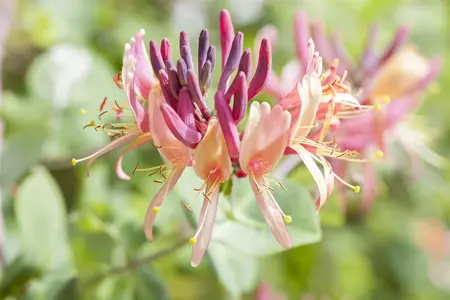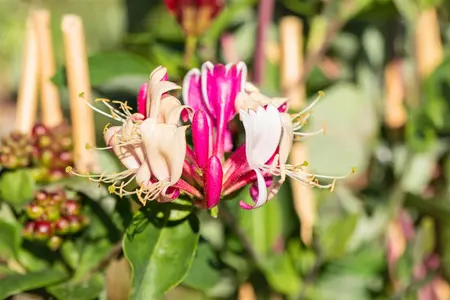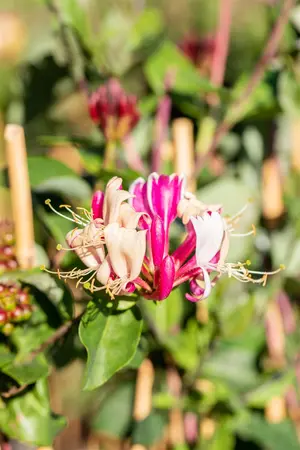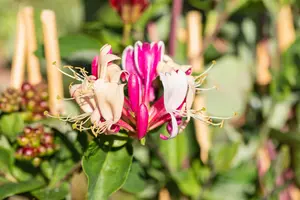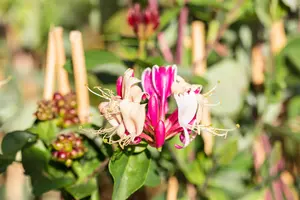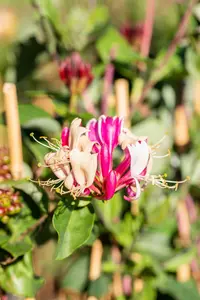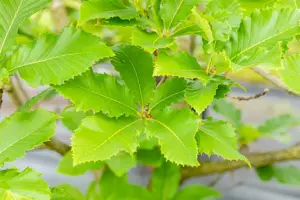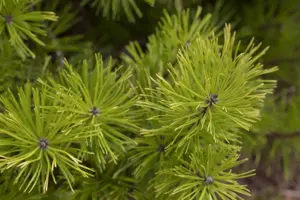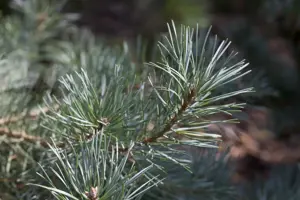Lonicera periclymenum - 2 Ltr, 4 canes
Lonicera periclymenum - 2 Ltr, 4 canes
Description
The Common honeysuckle (Lonicera periclymenum) is a climbing garden plant with decorative, dark red, round fruits. These exude a strong fragrance. It produces creamy white, tubular flowers arranged in whorls from May to July. The Common honeysuckle also has egg-shaped, dark green leaves. In a sunny to semi-shady location with humus-rich, lime-free soil, it usually reaches a height of around 6 metres and grows to around 3 metres wide.
Bulletpoints
* Fruit ornamentation
* the flowers are highly favoured by bees, bumblebees and hoverflies
* strongly scented flowers
* easy to care for
* tolerates shade
leaves
The deciduous leaves of Common honeysuckle are dark green, ovate, opposite, with entire margins. They are about 4 - 6 cm in size.
Spread
Europe.
Frost hardiness
The Common honeysuckle has good frost hardiness.
Growth
Common honeysuckle has a climbing habit. As a rule, it grows 20 - 60 cm per year.
Water
The plant needs plenty of water. Do not allow the soil to dry out.
Location
Preferred location in a sunny to semi-shady position.
Soil
Normal soil.
Planting time
Container plants can be planted all year round, except when the soil is frozen and in summer heat (over 30°C).
Tasks
- Mulching: In the period from March to April.
Care
- A slow-release fertiliser can be used in spring. This releases the nutrients slowly and continuously so that the plant is evenly supplied over a longer period of time.
- This plant should only be watered with lime-free water. Rainwater is particularly suitable for this purpose.
- Cut back frozen shoots to the healthy wood as soon as there is no longer any danger of frost.
- Nets, rods or trellises - many materials are suitable as climbing aids for delicate climbing plants. However, it is important that the main shoots of the plants are securely attached.
Flower
The creamy white, tubular flowers of Common honeysuckle appear in whorls from May to July. They grow to about 4 - 5 cm and are strongly scented.
Fruit
The dark red, round fruits of Lonicera periclymenum are particularly decorative. These appear from August.
Worth knowing
Lonicera periclymenum is slightly poisonous.
Use
Facade, privacy screen, bee pasture, bird food plant, small/front garden
Root
Lonicera periclymenum is a heartroot.
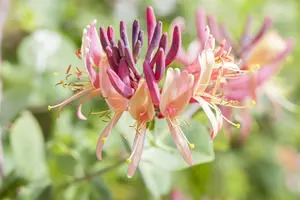
- Article number500
-
EAN codeLOPERICL-2C24S
- Latin nameLonicera periclymenum
- catalogLandscape shop

